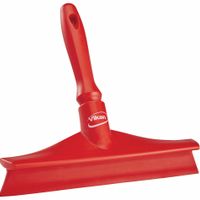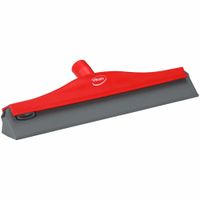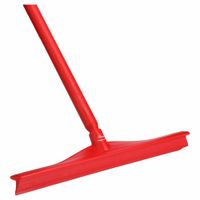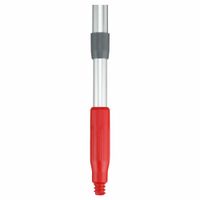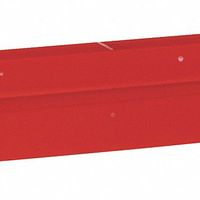Call +(254) 703 030 000 / 751 483 999 / 721 704 777
- Home
- Cleaning And Janitorial
- Cleaning Supplies
- Squeegees Window Cleaning
.....Read More
Frequently Asked Questions
What is the best squeegee for window cleaning?
The best squeegee for window cleaning is often considered to be the Ettore Master Brass Squeegee. This squeegee is renowned for its high-quality construction and effectiveness in delivering streak-free results. The brass material provides durability and a professional feel, making it a favorite among both professional window cleaners and homeowners.
Key features of the Ettore Master Brass Squeegee include:
1. **Durability**: The brass construction ensures longevity and resistance to corrosion, making it suitable for frequent use.
2. **Replaceable Rubber Blade**: The squeegee comes with a high-grade rubber blade that can be easily replaced, ensuring consistent performance over time.
3. **Ergonomic Design**: The handle is designed for comfort and ease of use, reducing hand fatigue during extended cleaning sessions.
4. **Versatility**: Available in various sizes, it can be used for different window dimensions, from small panes to large glass surfaces.
5. **Professional-Grade Performance**: It is widely used by professionals due to its ability to deliver streak-free and spotless results efficiently.
While the Ettore Master Brass Squeegee is highly recommended, other notable options include the Unger ErgoTec Ninja Squeegee, known for its ergonomic handle and lightweight design, and the Sorbo 3X4 Adjustable Squeegee, which offers adjustable angles for hard-to-reach areas.
Ultimately, the best squeegee depends on personal preference, specific cleaning needs, and budget. However, the Ettore Master Brass Squeegee consistently stands out for its quality and performance.
How do you properly use a squeegee for washing windows?
To properly use a squeegee for washing windows, follow these steps:
1. **Preparation**: Gather your materials, including a squeegee, a bucket of warm water mixed with a few drops of dish soap, a sponge or scrubber, and a lint-free cloth or microfiber towel.
2. **Initial Cleaning**: Dip the sponge or scrubber into the soapy water and apply it to the window, scrubbing gently to remove dirt and grime. Ensure the entire surface is covered.
3. **Positioning the Squeegee**: Start at the top corner of the window. Hold the squeegee at a slight angle, about 30 degrees, to the glass. This helps direct the water downwards.
4. **First Stroke**: Pull the squeegee across the window horizontally, maintaining even pressure. Wipe the blade with a cloth after each stroke to prevent streaks.
5. **Subsequent Strokes**: Overlap each stroke slightly with the previous one to ensure no water is left behind. Continue this process until you reach the bottom of the window.
6. **Vertical Strokes (Optional)**: For larger windows, you may use vertical strokes. Start at the top and pull the squeegee straight down, wiping the blade after each pass.
7. **Edge Cleaning**: Use a lint-free cloth or microfiber towel to wipe any remaining water or soap from the window edges and sill.
8. **Final Touches**: Inspect the window for any streaks or missed spots. If necessary, repeat the squeegee process on those areas.
9. **Maintenance**: Rinse the squeegee blade with clean water after use to remove any soap residue, and store it in a dry place.
By following these steps, you can achieve streak-free, clean windows efficiently.
What are the benefits of using a squeegee over other cleaning methods?
A squeegee offers several benefits over other cleaning methods, particularly for surfaces like windows, mirrors, and tiles. Firstly, it provides streak-free cleaning. The rubber blade of a squeegee effectively removes water and cleaning solutions without leaving streaks, which is a common issue with cloths or paper towels. This results in a clearer, more polished finish.
Secondly, squeegees are time-efficient. They cover large surface areas quickly, reducing the time spent on cleaning compared to using rags or sponges. This efficiency is particularly beneficial for commercial cleaning or when dealing with large glass surfaces.
Thirdly, squeegees are cost-effective. They are durable and reusable, unlike disposable cleaning products. A good quality squeegee can last for years, reducing the need for frequent replacements and thus saving money in the long run.
Additionally, squeegees are environmentally friendly. They minimize the use of paper towels and other disposable cleaning materials, reducing waste. This makes them a sustainable choice for eco-conscious individuals and businesses.
Moreover, squeegees are versatile. They can be used on a variety of surfaces beyond glass, such as shower walls, tiles, and even car windows. This versatility makes them a valuable tool in any cleaning arsenal.
Finally, using a squeegee can be ergonomically beneficial. It requires less physical effort and strain compared to scrubbing with a cloth, making it easier on the hands and wrists. This can be particularly advantageous for individuals with joint issues or those who perform cleaning tasks frequently.
In summary, squeegees offer streak-free results, efficiency, cost savings, environmental benefits, versatility, and ergonomic advantages, making them a superior choice for many cleaning tasks.
How often should squeegee blades be replaced?
Squeegee blades should generally be replaced every 3 to 6 months, depending on usage and the specific conditions they are exposed to. For commercial or high-frequency use, such as in car washes or professional window cleaning, blades may need replacement more frequently, possibly every 1 to 3 months. In contrast, for residential or less frequent use, blades might last up to 6 months or longer.
Several factors influence the lifespan of squeegee blades:
1. **Material Quality**: High-quality rubber or silicone blades tend to last longer than cheaper alternatives. Investing in better materials can extend the replacement interval.
2. **Surface Type**: Rough or abrasive surfaces can wear down blades more quickly. Smooth surfaces are less damaging and allow for longer use.
3. **Frequency of Use**: The more often a squeegee is used, the faster the blade will wear out. Regular users should monitor blade condition more closely.
4. **Maintenance**: Proper cleaning and storage of squeegees can prolong blade life. Rinsing blades after use and storing them in a dry, cool place helps prevent deterioration.
5. **Signs of Wear**: Inspect blades regularly for signs of wear, such as nicks, tears, or a loss of flexibility. If the blade leaves streaks or does not make full contact with the surface, it is likely time for a replacement.
6. **Environmental Conditions**: Exposure to extreme temperatures, sunlight, or harsh chemicals can degrade blades faster. Protecting blades from these elements can help maintain their condition.
By considering these factors and regularly inspecting the blades, users can determine the optimal replacement schedule to ensure effective and streak-free cleaning.
What is the difference between a floor squeegee and a window squeegee?
A floor squeegee and a window squeegee are both cleaning tools designed to remove water and debris from surfaces, but they differ in design, materials, and intended use.
1. **Design and Structure**:
- **Floor Squeegee**: Typically has a wider blade, often ranging from 18 to 36 inches, to cover large surface areas efficiently. The handle is usually longer and sturdier to allow the user to stand upright while cleaning floors. The blade is often made of rubber or foam, designed to handle rougher surfaces.
- **Window Squeegee**: Generally has a narrower blade, usually between 6 to 18 inches, to provide precision and control on glass surfaces. The handle is shorter and may be extendable for reaching higher windows. The blade is usually made of softer rubber to prevent scratching the glass.
2. **Materials**:
- **Floor Squeegee**: The frame is often made of metal or heavy-duty plastic to withstand pressure and frequent use. The rubber or foam blade is designed to handle various floor types, including tile, concrete, and hardwood.
- **Window Squeegee**: The frame is typically lighter, made of plastic or lightweight metal, to facilitate easy maneuvering on vertical surfaces. The rubber blade is softer and more flexible to ensure a streak-free finish on glass.
3. **Intended Use**:
- **Floor Squeegee**: Primarily used for cleaning large floor areas, removing water, spills, and debris from surfaces like garages, patios, and commercial spaces.
- **Window Squeegee**: Specifically designed for cleaning glass surfaces, such as windows, mirrors, and glass doors, providing a clear, streak-free finish.
In summary, while both tools serve the purpose of cleaning, their design and materials are optimized for their specific tasks: floor squeegees for durability and coverage, and window squeegees for precision and gentleness on glass.
How do you clean and maintain a squeegee?
To clean and maintain a squeegee, follow these steps:
1. **Disassemble**: If your squeegee has removable parts, disassemble it to clean each component thoroughly.
2. **Rinse**: Rinse the rubber blade and handle under warm water to remove loose dirt and debris.
3. **Clean the Blade**: Use a mild detergent or soap with a soft cloth or sponge to gently clean the rubber blade. Avoid using harsh chemicals or abrasive materials that can damage the rubber.
4. **Inspect the Blade**: Check the rubber blade for nicks, cracks, or warping. A damaged blade should be replaced to ensure effective cleaning.
5. **Dry the Blade**: After cleaning, dry the blade with a lint-free cloth to prevent water spots and maintain its flexibility.
6. **Clean the Handle**: Wipe down the handle with a damp cloth. If the handle is metal, ensure it is thoroughly dried to prevent rust.
7. **Reassemble**: Once all parts are clean and dry, reassemble the squeegee.
8. **Storage**: Store the squeegee in a cool, dry place. Hang it or lay it flat to prevent the rubber blade from bending or warping.
9. **Regular Maintenance**: Regularly inspect the squeegee for wear and tear. Replace the rubber blade as needed to maintain optimal performance.
10. **Avoid Prolonged Sun Exposure**: Keep the squeegee out of direct sunlight for extended periods, as UV rays can degrade the rubber.
By following these steps, you can ensure your squeegee remains in good condition, providing effective cleaning results and extending its lifespan.
What are the best techniques for streak-free window cleaning with a squeegee?
To achieve streak-free windows using a squeegee, follow these steps:
1. **Preparation**: Gather a high-quality squeegee, a bucket, a microfiber cloth, a sponge or scrubber, and a cleaning solution (mix water with a few drops of dish soap or use a commercial window cleaner).
2. **Initial Cleaning**: Remove dust and loose dirt from the window with a dry microfiber cloth or a soft brush.
3. **Apply Cleaning Solution**: Dip the sponge or scrubber into the cleaning solution and apply it evenly across the window surface. Ensure the entire window is wet to prevent streaks.
4. **Squeegee Technique**:
- **Start at the Top**: Position the squeegee at the top corner of the window.
- **Angle and Pressure**: Hold the squeegee at a slight angle (about 30 degrees) and apply consistent pressure.
- **Single Stroke**: Pull the squeegee down in a straight line for vertical strokes or across for horizontal strokes.
- **Overlap Strokes**: Slightly overlap each stroke to avoid leaving lines.
- **Wipe Blade**: After each stroke, wipe the squeegee blade with a clean, dry microfiber cloth to prevent drips and streaks.
5. **Edges and Corners**: Use a microfiber cloth to wipe any remaining moisture from the edges and corners of the window.
6. **Final Touch**: Inspect the window for any remaining streaks or spots and touch up as needed with a clean, dry microfiber cloth.
7. **Regular Maintenance**: Clean windows regularly to prevent the buildup of dirt and grime, which can cause streaks.
By following these steps, you can achieve streak-free windows with a squeegee, ensuring a clear and polished finish.
